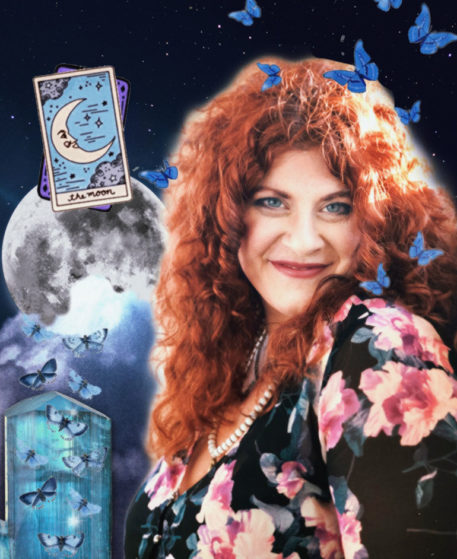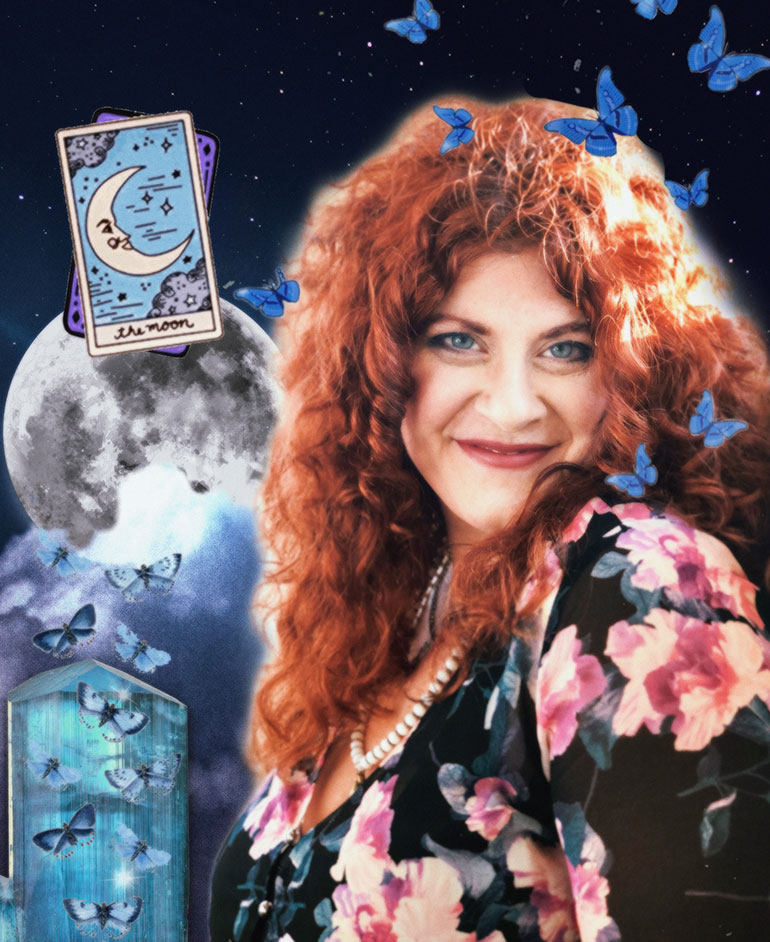 Although Tarot is a “New Age” symbol, it is anything but new. The tarot dates back hundreds of years, further back than you probably think. It is often tied all the way back to the early 14th century, brought over from ancient Egypt. Yes – they are that old. The cards then moved and morphed as they reached 15th century Italy, then called “tarrochi”. These cards had the basics that both playing and tarot cards have in current time – suits and courts. The cards were played in a way that can mimic a modern-day bridge and were
primarily used by the wealthy.
Although Tarot is a “New Age” symbol, it is anything but new. The tarot dates back hundreds of years, further back than you probably think. It is often tied all the way back to the early 14th century, brought over from ancient Egypt. Yes – they are that old. The cards then moved and morphed as they reached 15th century Italy, then called “tarrochi”. These cards had the basics that both playing and tarot cards have in current time – suits and courts. The cards were played in a way that can mimic a modern-day bridge and were
primarily used by the wealthy. The Transition from Game to Oracle
The cards turned more “tarot” and less “game” cards shortly after that, with the addition of more allegorical trump type cards being added to decks in the mid 1400s. These added more art, and most importantly more physical cards to the traditional deck as it evolved into the types we know today. The original cards had depictions of royalty, as that was what the affluent players were accustomed to at the time. As they grew into the more esoteric and spiritual cards that we know, the characters and the depictions on the card grew that way as well.
The use of the cards for divinatory use, called cartomancy, really kicked off in the 1700’s when a French citizen named Jean-Baptiste Elliette published his own guide and deck, meant specifically for alternative use. He tied in elemental and astrological elements and was the first to assign a specific order to the cards. He was said to have borrowed heavily from the Egyptian Book of Thoth, and that it was well reflected in the card versions he created. As the first occultist to really bring this type of depth and meaning to the cards, his versions kicked off the professional divinatory nature around the cards and coined him the first person to use tarot reading as his occupational title.
Based on this classic system, there are three decks that have evolved to show different artwork, have different meanings, and lead back to different creators and belief systems. The most common decks are the Thoth, made known by Aleister Crowley, the french rooted Tarot de Marseilles, and the Rider -Waite style decks.
The tarot waned in popularity in Italy in the late 1400s, and when France infiltrated Italy, the French adopted the cards as they were found and updated the artwork and meanings. From this came the Tarot de Marseilles, and it made its way back to Northern Italy retaining the French art, language and meanings through the 1800s. This is one of the most common decks produced and has been created over and over since the days of woodblock printing and hand coloring of the artwork.
Tarot as We Know it Today
The tarot stayed in the cupboards of France until the early 20th century, where it was reworked and given new life into the basic Rider-Waite system we know today. It is named this to reflect the names of the illustrator Pamela Smith, the author and mystic A.E Waite, and the publisher – the Rider Company. To this day, most decks that we see are based on this framework and imagery, following the Fool’s journey through the Major Arcana and seeing each suit through 10
and then into the court cards. The Rider-Waite is the most recognizable of the tarot decks and is often used as the deck new readers learn and practice with.
The Types of Tarot
The third and newest major incarnation of the tarot comes in the form of the Thoth style deck. This deck was created in the 1930s by occult leader Aleister Crowley and painted by Lady Freida Harris at Crowley’s instruction. The symbolism and names throughout the deck change slightly to incorporate different occult systems and philosophies.
In the classic Rider-Waite, The Major Arcana has 22 cards and is without suits – this means there are no Cups, Wands, Swords or Pentacles. While there are many theories about the mystical themes in the cards, the most popular one is that they have been modeled around
card 0, the Fool, and the journey he takes to Card 21 – The World.
The remaining 56 cards are organized into 4 suits – Wands, Pentacles, Swords, and Cups. These suits are numbered and each is valued in terms of the imagery, numerology, and the elements relating to that card and the suit.
Modern Day Cartomancy
Currently, there are hundreds of thousands of decks for divinatory use on the market. Decks based on every kind of historic type, some made completely new, and some with no “tarot” base at all. There are oracle cards, a card type that typically does not have any formal structure except to have each card contain some kind of instruction
or insight for the user to lean into.
It is interesting to note that the Tarot was not built out of any religious belief or tradition, and was built solely from a place of entertainment. This provides freedom we don’t always have with things of this nature, so be sure to make how you read or interpret the cards to be yours. Make sure you are comfortable in the decks or reading styles you choose and the way you get information and insight from the cards. It is important to note that one should be responsible as well, as often divinatory practices can be emotionally and spiritually charged and we should be making sure that we protect ourselves from energetic loss and negativity.
The tarot provides a space for creators and divinators alike to explore new ways to explore themselves intimately, perhaps in ways they have never before. Tarot cards mirror back to us the ways and spaces that we can use to heal, love, and move forward in our lives. They can give us insight on things about ourselves we may not have known about or acknowledged, and can highlight traits in others we may have glossed over or willingly turned away from.
No matter how we learn, use, and share the tarot, it is obvious that there is a rich and far reaching history to the cards. We bring from that deep symbolism and can bring those meanings to apply to our modern life. We apply them to our emotional speed bumps and to our new societal problems. We use tarot to gain clarity on how to spiritually and energetically navigate the world we live in now, using past symbols and teachings to move us into the future.
To learn more about tarot, or to book a reading with me, Tarot by Megan click the “Book an Appointment” button at the top of the HOME page of my website.
